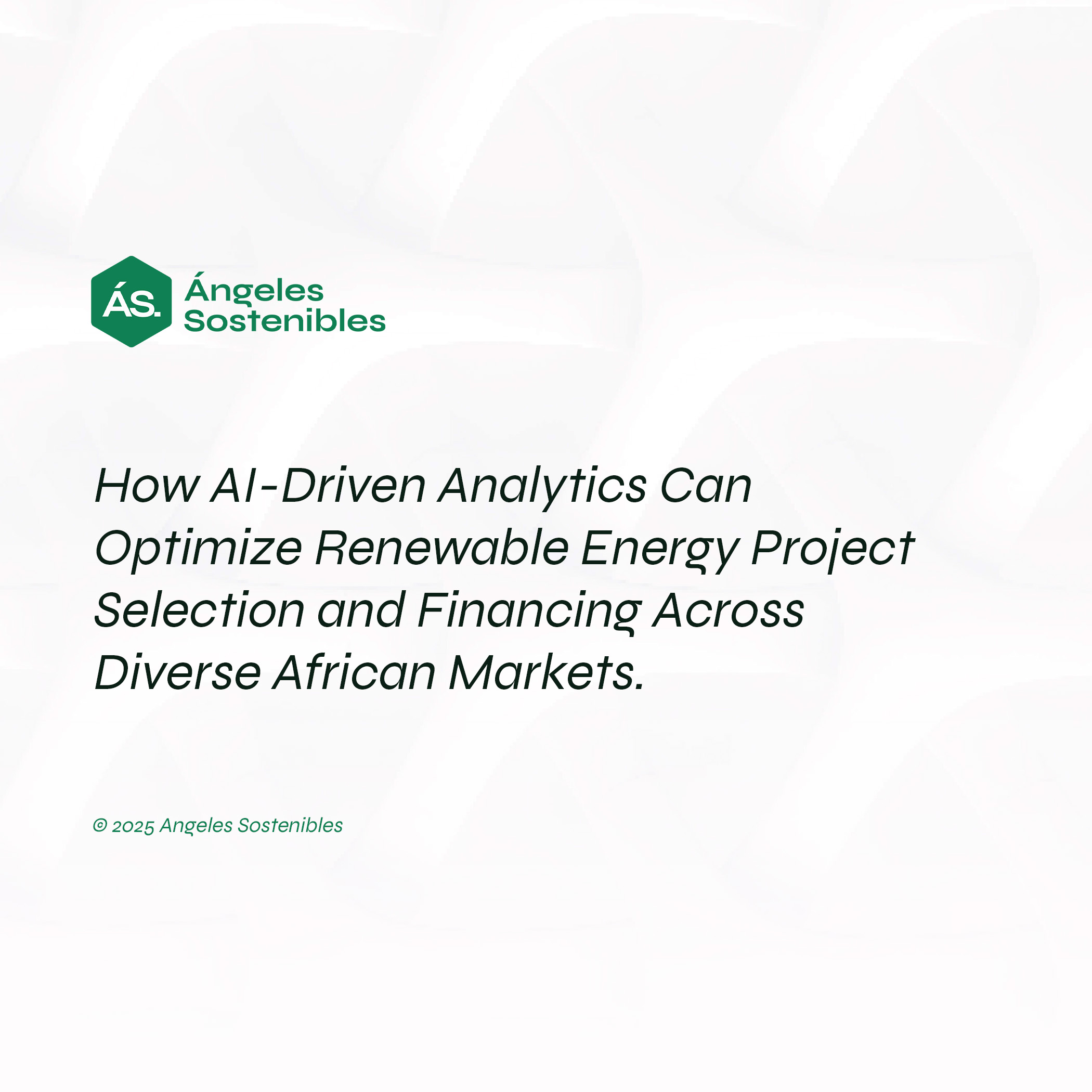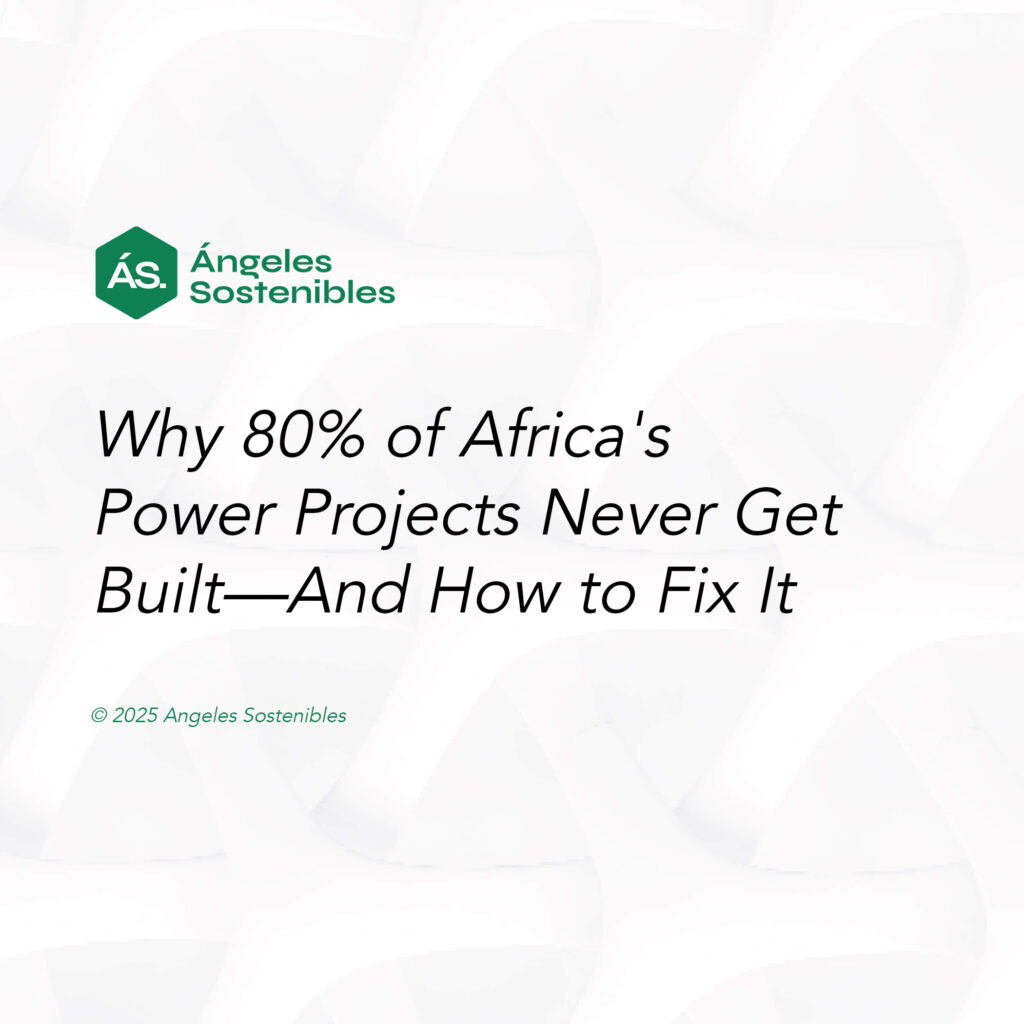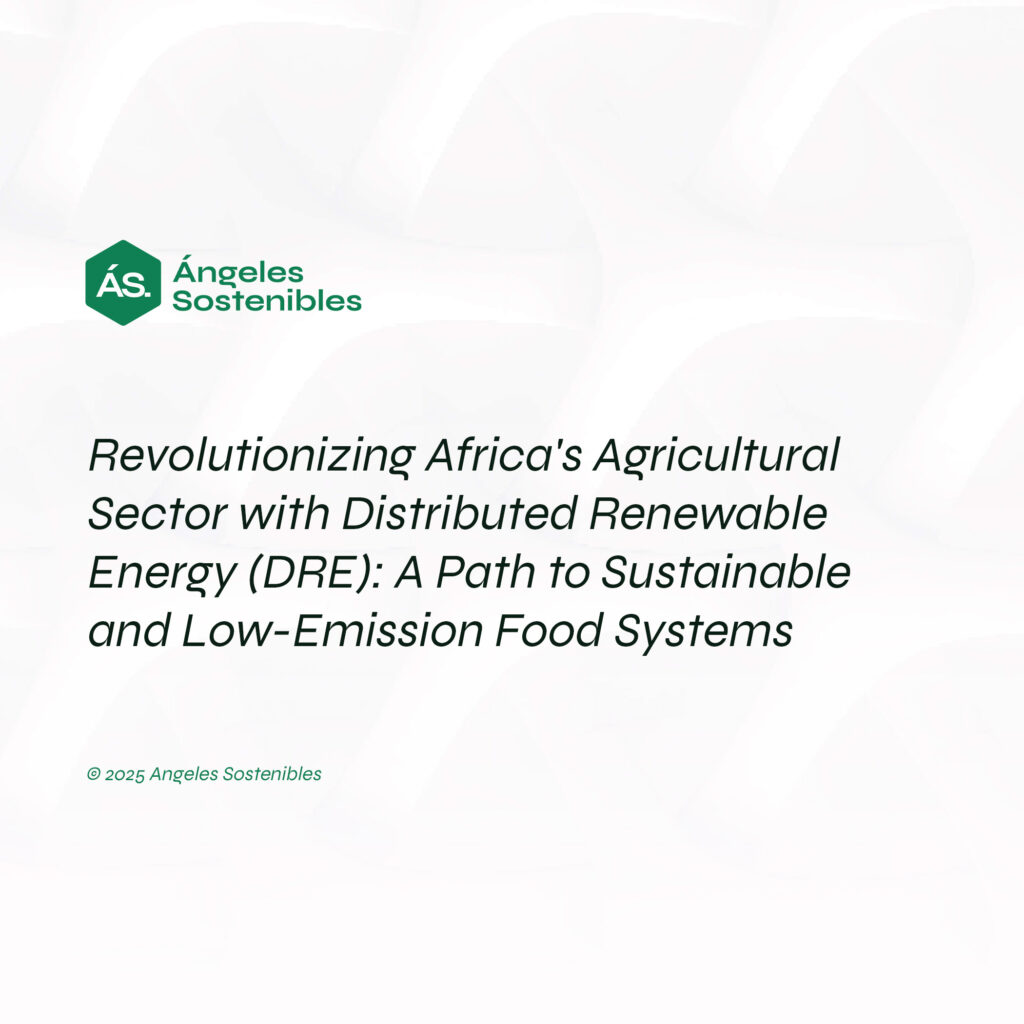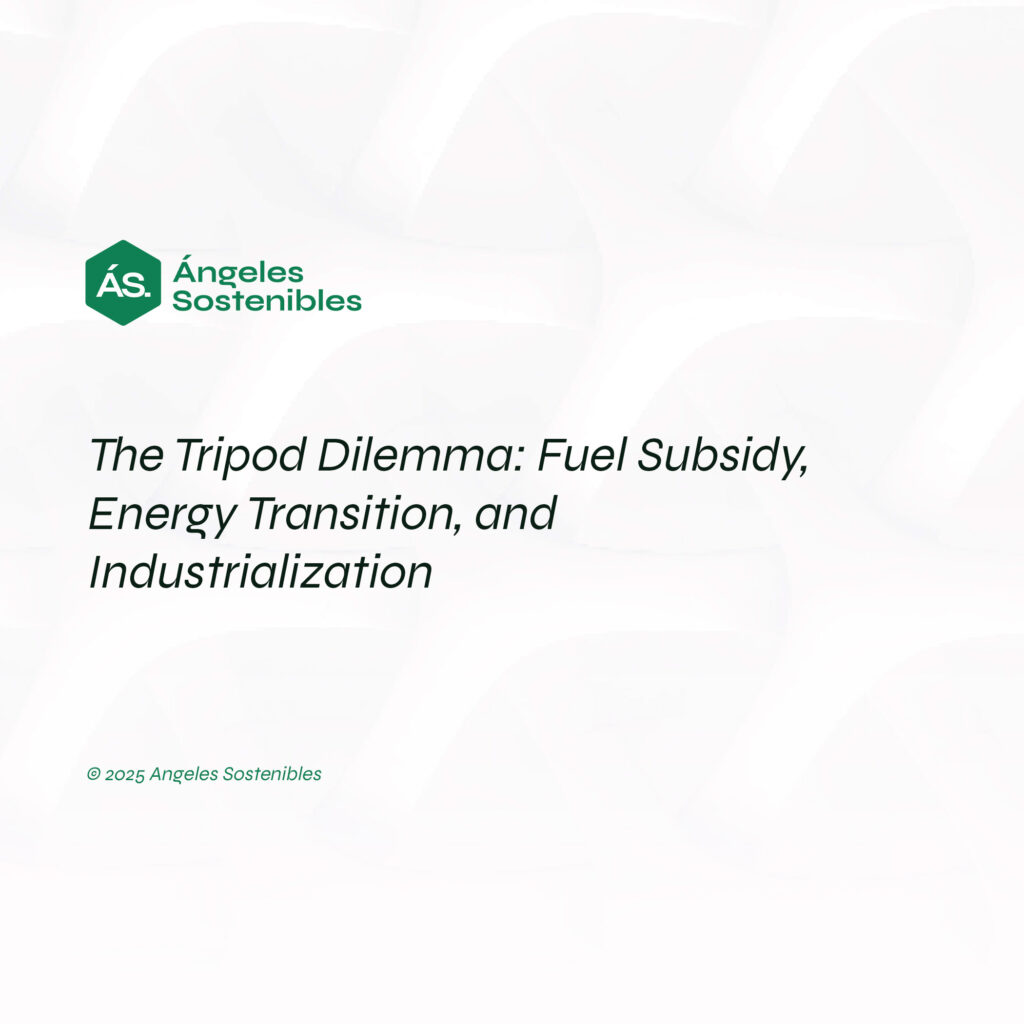Introduction
I’ve gathered insights from our recent work across multiple African markets to address a critical question facing renewable energy stakeholders: How can AI-driven analytics transform project selection and financing in environments characterized by complexity and variability? With Africa’s renewable energy potential estimated at over 1,000 GW for solar and 110 GW for wind, yet only a fraction of this potential is currently developed, we need sophisticated tools to accelerate deployment.
Several pioneering organizations are already demonstrating the value of data-driven approaches in this space. Odyssey Energy Solutions has created a digital platform that connects developers with financiers, optimizing project design. Nithio leverages AI for credit scoring and investment decisions in distributed energy. CrossBoundary’s data analytics have enhanced the performance of mini-grid investments, while KPMG’s Digital Gateway and GridBeyond are utilising advanced analytics in infrastructure planning and grid management. These early successes hint at the transformative potential, but we’ve only scratched the surface.
In this memo, I will examine how AI can help navigate the complex landscape of varying regulatory environments, resource availability, and grid infrastructure and other challenges that have traditionally complicated investment decisions for clean energy projects deployment in Africa.
What Doesn’t Work: Traditional Project Selection Approaches
In our field, we often see project selection methodologies that fail to capture the multidimensional complexity of African energy markets. Here’s what I’ve observed about conventional approaches:
- They rely too heavily on single-factor analyses (like solar irradiation or wind speed) without adequately accounting for regulatory, social, and infrastructure contexts
- They apply standardised risk metrics that miss market-specific nuances across Africa’s distinct regulatory environments across over 50 countries.
- They struggle to integrate qualitative factors like political stability and governance with quantitative technical assessments.
- They typically evaluate projects in isolation rather than considering portfolio effects and synergies across regions.
- They use static models that fail to adapt to rapidly evolving regulatory landscapes and economic conditions.
Consider Kenya and Nigeria as examples. In Kenya, the regulatory environment has facilitated significant development of renewable energy, whereas Nigeria presents a challenging regulatory landscape despite its enormous potential. Nithio leverages AI for credit scoring and investment decisions in distributed energy. Their platform analyzes payment behavior patterns, energy consumption data, and incorporates regulatory, economic, and climatic data points across multiple African markets. This comprehensive approach helps identify viable customer segments in regions that might otherwise be overlooked due to perceived macroeconomic challenges. Similarly, CrossBoundary’s data analytics platform has identified viable sites in supposedly “difficult” markets by incorporating socioeconomic indicators that are often overlooked by conventional assessments. Yet, despite these advances, most traditional analyses still fail to quantify market differences or predict their evolution accurately.
Most investment decisions can’t account for the intricate interplay between physical resource quality, regulatory frameworks, political stability, currency risk, grid capacity, and local demand patterns. In previous consultations, I’ve emphasized the limitations of conventional sensitivity analyses. In summary, traditional methods typically identify obvious opportunities but miss hidden gems and underestimate contextual risks.
Why is optimising renewable energy investment across Africa so difficult? Beyond the continent’s geographic and regulatory complexity, decisions require balancing conflicting objectives, such as maximising returns, minimising risk, achieving development impact, and ensuring energy access equity. Traditional models aren’t designed to handle this multidimensional optimisation problem.
AI-Powered Alternative: A New Decision Framework
One of the critical mistakes stakeholders make is treating African renewable markets as either homogeneous or unique. I believe AI-enabled analytics offer a middle path: identifying patterns across diverse markets while preserving crucial local context.
Odyssey Energy Solutions demonstrates this approach through its investment platform, which standardises financial assessments while tailoring technical designs to local conditions. Their algorithm processes over 500 site-specific variables to customise renewable solutions, resulting in a 40% improvement in project bankability for similar investment profiles. KPMG’s Digital Gateway similarly balances standardisation with localisation by applying consistent evaluation frameworks that adjust automatically to different regulatory environments.
How can we explain the apparent contradiction between Africa’s tremendous renewable resources and persistent underinvestment? The answer lies in information asymmetry and decision complexity that AI is uniquely positioned to address. GridBeyond’s work in integrating demand response with renewable energy deployment demonstrates how AI can address previously intractable grid management challenges. Their machine learning algorithms have enabled higher renewable penetration in markets previously considered technically constrained. Similarly, AI systems can process vast datasets encompassing technical, financial, regulatory, and socioeconomic factors to reveal insights that are invisible to conventional analysis.
In my earliest work evaluating solar projects in Nigeria, we relied heavily on conventional financial metrics—IRR, NPV, and sensitivity analyses. Experience revealed that projects with comparable financial projections performed drastically differently due to overlooked factors: grid reliability, currency fluctuations, payment delays, and local stakeholder dynamics. While the emergence of blended finance structures represents a promising evolution by combining concessional and commercial capital to address specific risks, success still depends on multidimensional assessment.
Project developers can become experts in specific markets, but no one can simultaneously navigate the continent’s regulatory complexity, resource variability, and infrastructure constraints without computational assistance. AI systems can continuously monitor these dimensions, identifying patterns human analysts might miss, while excelling at processing externalities like currency fluctuations, regulatory changes, and supply chain disruptions that can dramatically impact project valuations. This explains why renewable energy development occurs much more rapidly in some African markets despite similar resource quality—AI analysis reveals that success correlates most strongly with credit risk evaluation, ability to pay, regulatory stability, grid readiness, and currency stability, factors often overlooked in traditional project screening.
The Trading vs. Ownership Mentality
Over the years, I’ve observed a recurring pattern in renewable energy investment. Some approach African markets with what I call a “trading mentality” – seeking quick project development and exit – while others adopt an “ownership mentality” with longer-term horizons.
Consider this analogy:
Two renewable development firms enter a promising East African market. The first quickly develops projects optimised for rapid flip to institutional investors, focusing exclusively on short-term metrics. The second works with local stakeholders to create projects designed for long-term operational excellence, community benefit, and grid integration.
When regulatory changes occur, or currency challenges emerge, the first developer’s projects often struggle, while the second proves more resilient. The short-term focus optimises for immediate financial returns but builds in fragility.
I include this comparison because I believe AI analytics can help quantify the value of longterm resilience, bridging the gap between immediate returns and sustainable investment.
If you ask experienced infrastructure investors about their approach to African renewable energy markets, they will consistently emphasise the importance of thoroughly understanding local conditions. Most project developers don’t enter markets with plans to exit quickly, but financial pressures often drive short-term thinking.
Let’s think about the logic. AI systems can dynamically model various development scenarios over 5, 10, or 20+ year timeframes, revealing how seemingly minor differences in project design and financial structure can have a dramatic impact on long-term outcomes.
What Matters: AI Implementation Priorities
What truly matters is developing AI systems that augment human decision-making rather than replace it. Some technologists argue that AI can fully automate investment decisions, but they overlook the profoundly contextual nature of African energy markets. I believe human judgment remains essential.
Nithio’s approach exemplifies this balance. Their AI platform provides standardised credit scoring for distributed energy consumers, but final investment decisions incorporate human expertise. By automating data-intensive processes while keeping humans in the loop for relationship management and contextual assessment, they’ve financed over 10 times more connections than traditional methods would allow with the same resources.
CrossBoundary’s Innovation Lab similarly combines algorithmic optimisation with human judgment, testing AI-generated hypotheses about mini-grid operations through controlled field trials. Their hybrid approach has identified revenue-enhancing interventions that intuition alone missed while avoiding the implementation pitfalls of purely algorithmic recommendations.
Most renewable energy stakeholders would be more successful if they focused less on simplistic scoring systems and instead worked to integrate AI analytics into their existing decision-making processes. They should:
- Begin by identifying the specific decision points where enhanced data analysis would add the most value—Odyssey Energy Solutions focuses AI on project design optimisation while keeping stakeholder engagement human-led.
- Develop tailored AI models that combine satellite imagery, regulatory databases, socioeconomic indicators, and grid performance data—KPMG’s Digital Gateway aggregates these diverse data types into unified dashboards.
- Validate AI recommendations against historical project performance data while accounting for changing conditions—GridBeyond’s models continuously retrain on operational data to improve forecasting accuracy.
- Implement feedback mechanisms that continuously improve AI model accuracy through field observations—CrossBoundary’s data collection protocols systematically capture implementation outcomes to refine future recommendations.
At a recent think-thank meeting, I emphasised that at Angeles Sostenibles, we consider it our job to enhance human expertise with computational power, not replace seasoned judgment with black-box algorithms. I’ll stick with that position.
The above description might seem simple, even simplistic. Setting out goals and processes in broad terms is easy – the hard part is implementation. Since conventional analysis already incorporates obvious factors, superior results require identifying non-obvious relationships. This is where AI truly excels.
Key Principles to Remember
There’s more to effective AI implementation for renewable energy decision-making. Here are key elements to remember, exemplified by industry leaders:
- Focus on specific, well-defined problems rather than building generic “AI for renewables” solutions—Odyssey targets project design optimization and market development while Nithio specializes in credit risk assessment rather than trying to solve everything at once.
- Ensure your AI systems incorporate both structured data (e.g., irradiation, financial metrics) and unstructured information (e.g., regulatory documents, news)—KPMG’s Digital Gateway integrates satellite imagery, financial databases, and regulatory text analysis into unified decision-support systems.
- Develop explainable AI models that allow stakeholders to understand and validate the reasoning behind recommendations. CrossBoundary makes algorithmic recommendations transparent by breaking down contributing factors into weighted components that stakeholders can easily examine and interrogate.
- Recognize that market conditions evolve rapidly, requiring regular retraining of models with fresh data—GridBeyond’s dynamic algorithms automatically adjust to changing grid conditions, retraining weekly to maintain accuracy.
- Address data gaps creatively – particularly for remote regions where historical project data may be limited — Nithio combines satellite imagery, mobile money data, and targeted surveys to construct profiles where conventional data is scarce.
- Balance quantitative outputs with qualitative context that may not be captured in available datasets—Odyssey’s platform includes structured sections for local expertise that algorithms might overlook but can significantly impact project viability.
- Integrate distributed intelligence from local teams that understand market nuances not apparent in data—CrossBoundary maintains field teams across African markets, which systematically feed observations into their central analytics platform.
Asymmetry: The Power of AI-Enhanced Decision-Making
“Asymmetric insight” is a concept I have reflected on recently and consider increasingly important. It refers to the competitive advantage gained when AI reveals patterns invisible to conventional analysis.
In the context of African renewable markets, asymmetric insight manifests as the ability to:
- Identify promising projects in markets others have overlooked.
- Quantify risks more accurately than competitors.
- Predict regulatory changes before they’re widely recognized.
- Optimize financial structures for specific market conditions.
- Build portfolios with complementary risk profiles across different regions.
Let me illustrate with real-world examples of how AI can deliver asymmetric insight:
Market Analysis: Traditional approaches focus heavily on high solar resource regions with stable regulatory environments, but AI-driven analysis can reveal hidden opportunities. For instance, Nithio’s AI platform analyzes payment behavior patterns and energy consumption data across multiple African markets. According to their published research, this approach has helped identify viable customer segments in regions previously overlooked due to perceived macroeconomic challenges.
Project Risk Assessment: While traditional analysis might reject projects due to grid constraints or limited project finance history, companies like Odyssey Energy Solutions are using AI to transform risk assessment. Their platform exemplifies the power of AI-enhanced decision-making in African renewable energy markets, creating asymmetric advantages for developers and investors. Their platform processes hundreds of site-specific variables to reveal patterns invisible to conventional analysis, improving project bankability significantly. By combining sophisticated analytics with remote monitoring capabilities across multiple countries, Odyssey enables stakeholders to identify promising opportunities in overlooked markets, quantify risks more accurately than competitors, and optimize financial structures for specific conditions. Their approach balances standardized evaluation frameworks with critical local context, providing the asymmetric insight needed to transform project financing and execution while advancing rural electrification as essential infrastructure rather than isolated installations.
Mini-Grid Portfolio Optimization: CrossBoundary’s Innovation Lab has applied machine learning to predict electricity demand patterns in rural communities. Their published results indicate these methods can forecast daily and seasonal demand variations with significantly greater accuracy than traditional methodologies, enabling more efficient mini-grid designs and improved financial planning.
Regulatory Intelligence: KPMG’s Digital Gateway platform employs natural language processing to analyze regulatory documents and policy announcements across multiple African jurisdictions. This provides early warning of potential regulatory changes affecting renewable investments, giving users valuable lead time to adapt strategies.
Grid Integration Solutions: GridBeyond has applied machine learning algorithms to assess grid stability and connect various assets like distributed generation, energy storage, and EV charging with energy markets, enabling grid balancing and financial incentives. Their analysis helps identify locations where battery storage or smart inverters can significantly enhance grid stability and enable higher renewable penetration and can be useful in the African context.
These documented applications demonstrate how AI-driven analytics provides asymmetric advantages by allowing stakeholders to see opportunities others miss and manage risks others can’t quantify. It transforms the investment landscape by reducing information asymmetry that has historically disadvantaged newcomers to African energy markets.
While no AI system can guarantee project success, these tools can systematically improve decision quality by processing more information, identifying non-obvious patterns, and continuously learning from outcomes across the continent.
April 17, 2025
© 2025 Angeles Sostenibles All Rights Reserved
Legal Information and Disclosures
This memorandum expresses the views of Angeles Sostenibles as of the date indicated and may be revised or updated without notice. The information is provided for educational and discussion purposes only. While Angeles Sostenibles offers advisory services in renewable energy infrastructure and investment, this document does not constitute a formal recommendation for any specific project, investment, or financing structure. Market assessments and technology evaluations presented are derived from sources believed reliable but not independently verified. Past infrastructure project performance is not indicative of future results. Investments involve substantial risks, including regulatory, political, and operational considerations, that must be evaluated on a case-by-case basis. © 2025 Angeles Sostenibles. All rights reserved—no reproduction without prior written consent.





